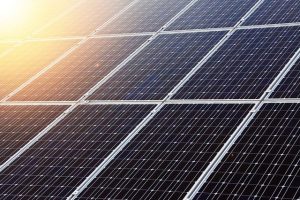
Solar energy is on the rise. According to the U.S. Department of Energy (DOE), 3% of all electricity produced in the United States comes from solar panels. Solar panels are devices that produce electricity in response to sunlight. Solar panels, however, typically require the use of a separate component known as a solar inverter. Without a solar inverter, they won’t be able to produce usable electricity. What is a solar inverter exactly, and how does it work?
Overview of Solar Inverters
A solar inverter is a component in a solar panel installation that’s designed to convert direct current (DC) electricity into alternating current (AC) electricity. Power grids, of course, typically distribute AC electricity. AC electricity lives up to its namesake by alternating its direction. It can change direction, thereby allowing it to travel across longer distances than that of DC electricity. Solar inverters are responsible for converting the DC electricity produced by a solar panel installation into AC electricity.
Whether monocrystalline or polycrystalline, solar panels almost always produce DC electricity by default. Exposure to sunlight causes the electrons within their photovoltaic material to move around and become “excited.” This movement results in the production of DC electricity. To use the solar panel installation’s electricity in a home or building, it must be converted into AC electricity, which is the solar inverter’s job. The solar inverter will perform the DC-to-AC conversion so that the electricity can be used to power devices in a home or building.
How Solar Inverters Work
Most solar inverters look like small boxes. They are installed between a solar panel installation and the home or building that it powers. The DC electricity produced by a solar panel installation will enter the solar inverter where it’s converted into AC electricity. After leaving the solar inverter, the newly converted AC electricity will enter the home or business.
Of course, there are different types of solar inverters. Some of the most common types include battery solar inverters, central solar inverters, micro solar inverters and hybrid solar inverters. Regardless, they all work by taking the DC electricity produced by solar power installation and converting it into AC electricity.
In Conclusion
Solar panel installations consist of more than just panels. Most of them have a solar inverter. Solar inverters are devices that convert DC electricity into AC electricity. Homes and businesses generally use the latter type of current, so solar panel installations need to a solar inverter to produce usable electricity.
See Monroe’s Solar Inverters .
